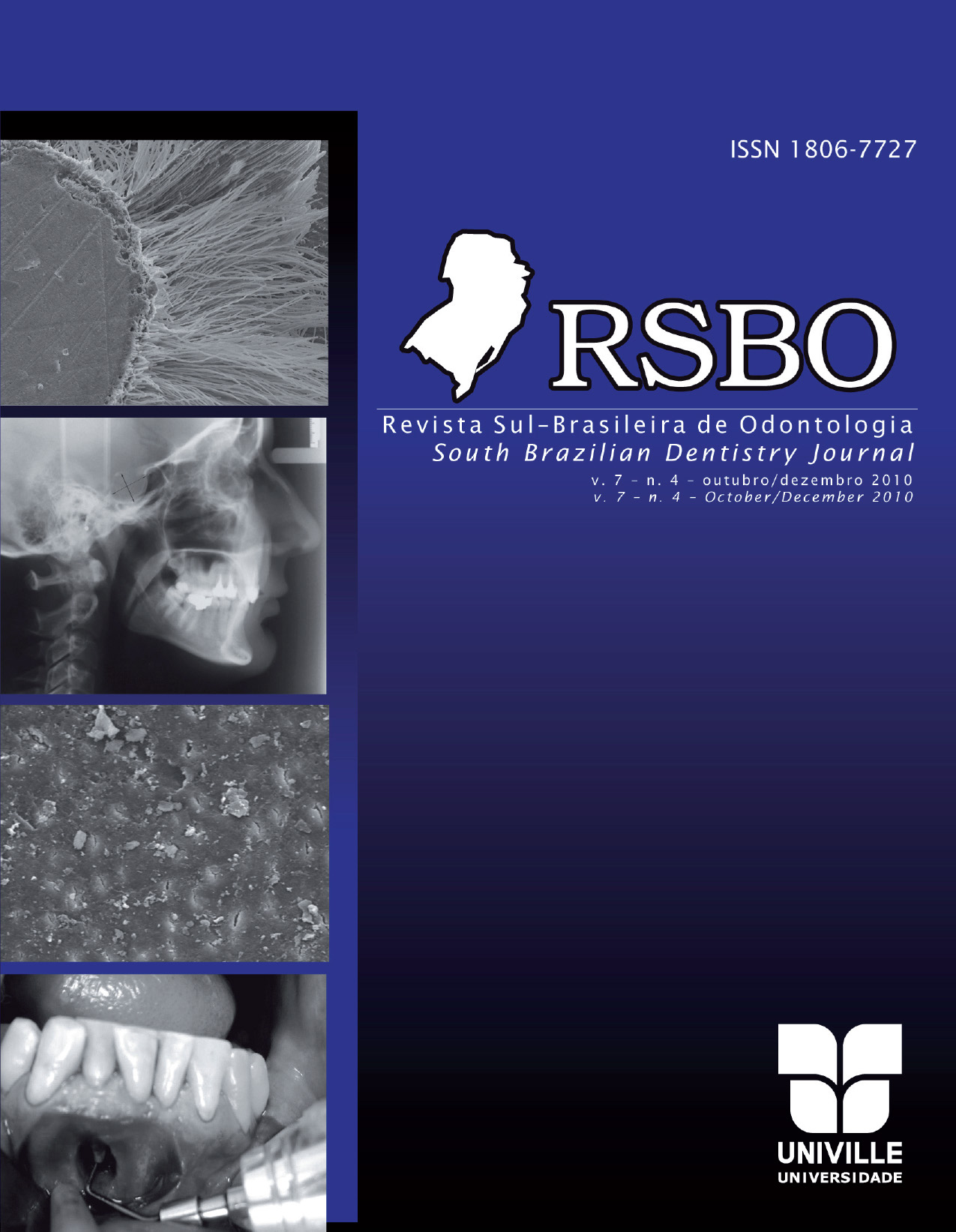Evaluation of dentin cleansing by a detergent derived from castor oil (Ricinus communis) used as root canal irrigant: a scanning electron miscroscopy study
DOI:
https://doi.org/10.21726/rsbo.v7i4.1175Palavras-chave:
Ricinus communis; sodium hypochlorite; scanning electron microscopy.Resumo
Introduction and objective: To evaluate, by scanning electron
microscopy (SEM), the cleaning of root canal walls after biomechanical
preparation and irrigation with castor oil (Endoquil®) and 0.5% sodium
hypochlorite (NaOCl). Material and methods: Fifteen maxillary
incisors were subjected to standardized root canal instrumentation
with different irrigants (n = 5): G1 – Endoquil; G2 – 0.5% NaOCl;
G3 – saline solution (control). After instrumentation, the teeth were
prepared for SEM analysis (X 2000 original magnification) to evaluate
the cleaning of cervical, middle and apical thirds. The area analyzed
was quantified according to the percentage of open and closed tubules
and data were statistically analyzed by ANOVA and Kruskal Wallis tests.
Results: Statistical analysis showed that Endoquil was similar to 0.5%
NaOCl at the apical third. However, there was statistically significant
difference at the cervical and middle thirds, between these two groups.
Conclusion: It was concluded that Endoquil presented better results
at the middle third while 0.5% NaOCl presented better results at the
cervical third; at the apical third, both irrigants were similar.

